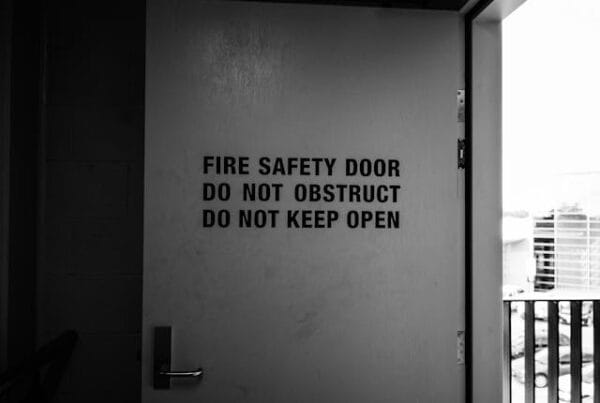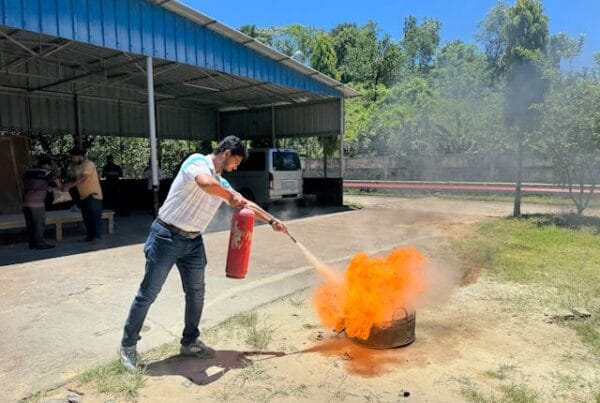
An effective Fire Evacuation Plan Hampton is arguably the most critical component of your building’s life safety system. While advanced technology like alarms and sprinklers are designed to control a fire, a well-rehearsed plan is what guides people to safety amidst the potential chaos of an emergency. It is a documented procedure that outlines the necessary actions to be taken by all personnel in the event of a fire, ensuring a swift, orderly, and safe exit. At Sefirepro, we believe that a great safety system is one where technology and human preparedness work in tandem. This comprehensive guide will walk you through the essential steps of developing and implementing a fire evacuation plan that truly protects your people.
Too often, building managers treat the evacuation plan as a mere document to satisfy regulatory compliance. However, its true value is proven only during a real crisis. Without a clear plan and regular practice, panic can quickly set in, leading to confusion, injuries, and tragic outcomes. A proactive approach to emergency planning is a hallmark of a responsible organization.
Why Is a Documented Fire Evacuation Plan Necessary?
Before diving into the “how,” it’s crucial to understand the “why.” A formal fire evacuation plan serves several vital purposes:
- Ensures Orderly Evacuation: It provides clear, step-by-step instructions, minimizing panic and ensuring everyone knows the primary and secondary escape routes.
- Saves Precious Time: In a fire, every second counts. A pre-established plan eliminates the guesswork, allowing for a faster exit from the building.
- Meets Legal & Regulatory Requirements: In Indonesia, regulations such as the Minister of Public Works Decree No. 26/2008 require buildings to have a proper emergency management system. A documented plan is a key part of this compliance.
- Identifies Roles and Responsibilities: The plan appoints key personnel, such as Fire Wardens, who are trained to assist others, check that areas are clear, and report to emergency services.
- Aids Emergency Responders: A copy of the floor plan with marked exits, available to firefighters upon arrival, can significantly speed up their search and rescue operations.
Key Components of a Successful Fire Evacuation Plan Hampton
Creating a robust fire evacuation plan involves more than just printing a map. It requires a thorough assessment of your facility and personnel. A comprehensive plan should always include the following elements.
- Clear Escape Routes:
- Diagrams of each floor showing the location of fire exits, stairwells, and primary/secondary evacuation routes.
- Routes must be kept clear of obstructions at all times. This is a critical point during a fire safety audit.
- The routes should lead to a designated, safe assembly point (or muster point) outside the building.
- Designated Assembly Point:
- A safe location away from the building and out of the way of emergency vehicles.
- The location should be easily identifiable and large enough to accommodate all employees.
- A procedure for headcounts must be established at the assembly point to account for every individual.
- Procedures for All Personnel:
- Specific instructions for all employees, including those who may require special assistance (e.g., persons with disabilities).
- Procedures for critical operations shutdown, if applicable (e.g., turning off machinery or gas lines).
- Clear instructions to never use elevators during a fire evacuation.
- Assigned Roles and Responsibilities:
- Appointment of Fire Wardens for each floor or department.
- Training for Fire Wardens on their duties, which include sweeping their designated area, guiding staff, and reporting to the evacuation coordinator. Sefirepro offers specialized Fire Warden training programs.
- Communication Protocols:
- How the fire alarm will be activated and what it sounds like.
- How information will be communicated during the evacuation (e.g., via public address system).
- A clear chain of command for communicating with emergency services.
The Importance of Regular Fire Drills in Fire Evacuation Plan Hampton
A fire evacuation plan is only effective if everyone knows it and has practiced it. Fire drills are the practical application of your plan. They are essential for:
- Building Muscle Memory: Drills help employees internalize the evacuation routes and procedures, so their response becomes automatic in a real emergency.
- Testing the Plan: Drills reveal weaknesses in your plan. You might discover a bottleneck in a stairwell, a communication failure, or an assembly point that is too close to the building.
- Evaluating Warden Performance: It allows you to assess how well your appointed Fire Wardens perform their duties under pressure.
- Compliance: Most fire codes mandate the execution of fire drills at regular intervals (e.g., annually or semi-annually).
According to international bodies like the U.S. Occupational Safety and Health Administration (OSHA), drills are a fundamental part of ensuring a plan’s workability.
Conclusion: Partner with Sefirepro for Total Emergency Preparedness
Developing a comprehensive fire evacuation plan hampton is a non-negotiable responsibility for every building owner and business manager. It is the human element of fire safety that bridges the gap between automated systems and the successful protection of lives. From drafting the initial document to training your Fire Wardens and conducting realistic fire drills, the process requires expertise and attention to detail.
Don’t leave the safety of your people to chance. Contact Sefirepro today to consult with our emergency planning specialists. We will help you create and implement a tailored evacuation strategy that ensures your team is prepared for any eventuality.





